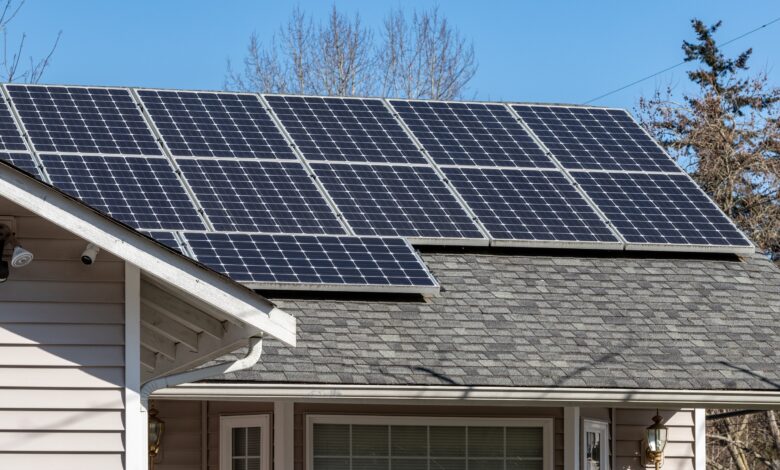How Solar Panels Can Save Your Electricity Bills

The necessary financial calculations to assess the feasibility of implementing solar panels in your residences for prioritizing sustainable living.
What Is Solar Power for the Home?
Installing solar power systems can offer a range of advantages to homeowners, such as reduced electricity expenses, a decreased environmental impact, and potentially increased property values. However, these benefits are often accompanied by substantial upfront installation and ongoing maintenance expenses, and the extent of the advantages may differ significantly depending on the individual property.
Understanding Solar Power
In essence, determining the financial viability of installing a solar power system for your home is a straightforward process. It involves the following calculations:
- Assessing the total cost of the solar power system.
- Estimating the energy output the system will generate.
- Comparing the potential cost of that energy with what you would otherwise pay for electricity from conventional sources.
- Determining the number of years it will take for the initial investment in the solar system to be recouped through savings on energy costs.
- Verifying if the system is projected to pay for itself within a five-year timeframe.
If the system is expected to achieve this and you have the required upfront capital, it is likely a highly favorable decision. However, if the savings will take longer to materialize or if you need to take a loan to afford the installation, it is crucial to carefully consider the decision before proceeding.
The Cost of Solar Power for Homeowners
Let’s start by examining the expenses involved in setting up a solar power system for your residence. Apart from the solar panels, there are other essential components to consider, such as inverters, metering equipment, housing elements, cables, and wiring gear. Some homeowners might also contemplate adding battery storage.
Besides the initial installation costs, there are ongoing operational and maintenance expenses associated with maintaining a photovoltaic (PV) solar array. Routine panel cleaning is necessary, and over time, the inverters and batteries (if present) may require replacement after several years of usage.
Calculating Your Energy Production
The next factor to take into account for your calculations is the energy production of your solar system and its timing. This calculation can be quite intricate, even for experienced solar engineers.
A crucial consideration is the solar irradiation levels specific to your home’s geographic location, essentially indicating how sunny the area is. Generally, being closer to the equator tends to be more advantageous for solar panel usage, but various other factors also play a role.
Another essential aspect is the orientation of your home. For rooftop solar arrays, a south-facing roof free from obstructions like trees maximizes solar energy absorption. If such conditions are not feasible, panels may need to be mounted on external supports and placed away from the house, which would entail extra costs for additional hardware and cables.
How Much Will You Save?

Once you have determined the initial cost of the solar power system and its projected energy production, you can theoretically estimate the potential annual energy cost savings.
However, this calculation can be complex due to various factors, particularly how you currently pay for electricity. Many utilities apply a fixed rate for residential consumers, regardless of when electricity is consumed.
Calculating Solar Power Costs
Now, armed with the necessary information, you can proceed to make a final assessment and calculation to determine whether solar power is a suitable option for your situation.
However, the typical method for assessing the feasibility of solar power involves calculating the levelized cost of electricity (LCOE) and comparing it to the local utility’s electricity rates. The LCOE for household solar is typically computed in the same format as the cost/kilowatt-hour, which is commonly used in electricity bills. This comparison helps in determining the cost-effectiveness of adopting solar energy for your home.
Pros and Cons of Solar Panels for Your Home
Pros:
- It’s a green energy source, contributing to a reduction in your carbon footprint.
- Net metering allows you to sell excess energy back to the grid.
- You may qualify for specific tax incentives.
Cons:
- High installation and maintenance costs are still a factor.
- Solar energy is only generated during daylight hours.
- Certain components of the system require periodic replacement.
Solar Panels for Homes in India
The MNRE has introduced the Rooftop Solar Programme Phase — Ⅱ, which aims to promote clean energy adoption among homeowners. Under this program, homeowners and housing societies are eligible to apply for a fixed solar subsidy aid when they install a rooftop solar system.
To streamline the process and ensure greater accessibility, the National Portal for Rooftop Solar has been established. This platform offers a user-friendly interface, making it simpler, faster, and more transparent for individuals to avail subsidy benefits.
Conclusion
Deciding whether to install a PV solar panel might appear overwhelming, but it’s crucial to recognize that it represents a long-term investment. Even if the cost of solar power is slightly higher than electricity purchased from a utility, homeowners might still choose to install solar panels to safeguard against potential future fluctuations in energy costs.
Moreover, some homeowners may look beyond purely financial considerations and prioritize sustainable living, making solar power an appealing choice.
The Disposal Company is on a mission to transform India’s approach to sustainability, offering an innovative platform that allows brands to go plastic-neutral and carbon-neutral. Discover more here.




